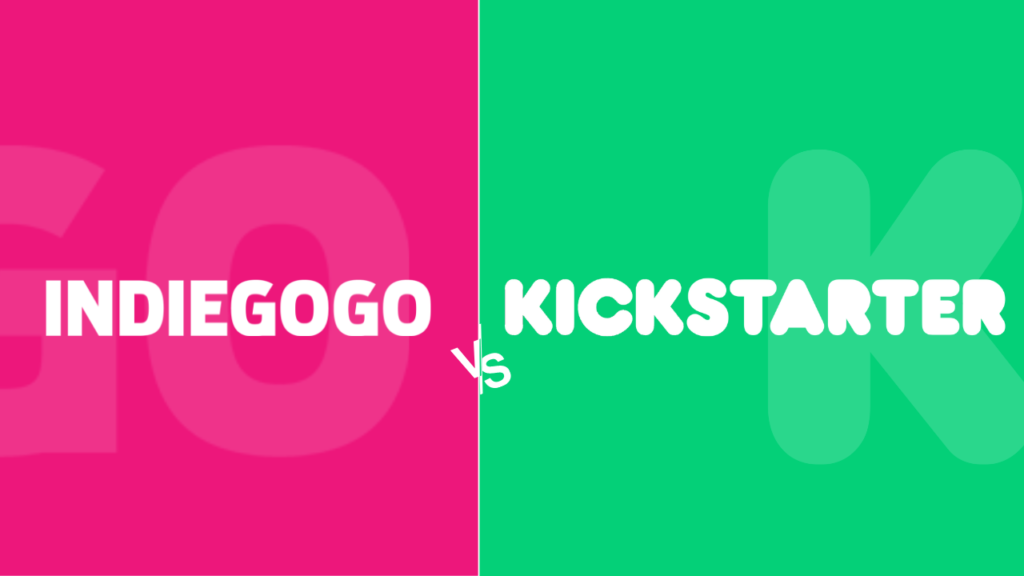Are you a filmmaker that is considering a crowdfunding platform like Kickstarter or Indiegogo to get seed money for a dream project?
If so, it’s time to get excited! Crowdfunding is an extremely powerful tool for artists like you, allowing you to raise funds from a community that truly cares about your vision.
In this article, we’re taking you through how to raise money for a film with crowdfunding so that you can be prepared as you embark on this highly rewarding journey.
Lights! Camera! Crowdfunding!
Step 1: Choose Your Platform
When it comes to raising money for films, there are two primary crowdfunding sites that will be available to you: Kickstarter and Indiegogo.
We’ve broken down everything you need to know about Kickstarter vs. Indiegogo in this helpful article, so make sure to check that out. For now, though, let’s discuss these platforms exclusively in the context of filmmaking.
Taking a look at the Kickstarter stats, nearly 78,000 video projects have been launched on the platform to raise greater than $500M.
Of those 78,000 projects, 37.84% of campaigns were funded successfully — closely resembling the overall Kickstarter success rate of 38.92%.
Indiegogo doesn’t release comprehensive stats as Kickstarter does, so it’s a little bit more difficult to monitor crowdfunding success rates. The Indiegogo website claims that their platform is the place “where filmmakers are raising more for their films globally than any other crowdfunding platform,” so take that as you will.
Generally, Kickstarter success rates are much higher than Indiegogo in terms of reaching their funding goal. This is partly because more campaigns are launched on Indiegogo, but it comes down to one major difference: fixed vs flexible funding.
On Kickstarter, it’s an all-or-nothing (fixed) approach. If you meet your funding goal, you keep all the money, then you must fulfill promised rewards to your backers.
Indiegogo, on the other hand, allows for flexible funding. This means that you can keep the money you’ve raised whether you reach your funding goal or not.
This is what attracts many filmmakers to Indiegogo as opposed to Kickstarter, as some funding is better than no funding.
But be careful with this ideology: backers are much less inclined to back your project if they don’t believe their dollars are going to make a real difference. They don’t want to donate to a campaign that doesn’t reach its funding goal, thus leading to a project that doesn’t get finished.
At the end of the day, you’ll have to decide what’s best for your project. Both platforms contain an element of risk, and you should have a plan in place for any result.
Step 2: Promote Your Film
Once you’ve chosen your platform, it’s time to start marketing your campaign as part of your pre-launch strategy.
What do we mean by this?
Promotion of your campaign starts long before you hit ‘Go Live.’ You want to build a list of potential backers that are warmed to convert prior to launching your campaign in order to capitalize on the all-important initial funding dump.
This is primarily done through the building of an email list. The best way to do this is to run paid social ads that lead to a landing page that is designed to capture their email and then keeping those leads engaged through weekly messaging.
You can also funnel people to a VIP Facebook group after opt-in to build a sense of community around the project. This is what we marketers call getting them in the funnel!
A quick disclaimer on this strategy: films are not tangible products. Your project is not likely to have a clear problem-solution like a traditional offering. With this in mind, it’s going to be more difficult to attract strangers.
Pay close attention to your cost per lead. If you’re paying $5-10 for an email, that’s probably not going to be a return on investment that is feasible.
Therefore, the most important element of your film’s promotional strategy will likely be mobilizing your core network.
This means calling upon:
- People that you have collaborated with in the past
- Your family, friends, and neighbors
- Your team’s family, friends, and neighbors
- Anyone and everyone that might be willing to pledge
It’s important to communicate just how much their donation would mean to you, as well as educate them about how Kickstarter/Indiegogo works. When people feel valued and educated, they are likely to show up.
Keep in mind, too, that people are going to say no or just not show up altogether. You have to be willing to brush this off and not take it personally. If you let every non-conversion get under your skin, you’ll find yourself despairing.
Mobilize everyone that you can. Show genuine thanks (publicly) for their support. Once the ball gets rolling, those folks that were on the fence will want to get in on the action!
Step 3: Build Your Campaign Page
Now that you’ve begun working to collect a community that is primed to back your campaign, it’s time to start building out your campaign page.
The first element of this is putting together your pitch video. This is what will appear at the top of your campaign page, serving as the first thing backers will encounter.
For film projects, this pitch usually functions as a trailer. Keep it between 1-3 minutes, and keep your focus in these areas:
- Igniting curiosity / interest
- Provoking an emotional response
- Teasing out key themes of your full project
Once you’ve got your pitch video together, you can build out the rest of your campaign with elements like:
- Images, gifs, and short excerpts from the film
- Supporting copy
- ‘About the team’ section (important for films)
Next, we’re on to building reward tiers (check out that article for ideas). These are what you will offer to a backer in exchange for their pledge, and they must be compelling.
The film itself is likely to be your core reward. But you should also brainstorm other rewards, such as autographed images, pictures or posters from the film, exclusive behind-the-scenes access, interviews with the creators, and more.
Structuring reward tiers in this way will incentivize larger donations and get people who are most passionate about your project more involved.
Here is the best advice I can give to you on structuring rewards tiers: research successful film campaigns that have come before you. What reward tiers did they offer?
Which ones were most popular? All of this data is available to you on their campaign page, use it! And then emulate those strategies in your own campaign.
Key Conclusions & Additional Resources
We hope that this article was helpful for you in mapping out how to raise money for a film on Kickstarter or Indiegogo.
If you learned something, let us be your trusted resource going forward. We’re passionate about helping artistic creators bring their dreams into reality through crowdfunding, and we’re proud to offer you these educational tools:
- Book: The Kickstarter Launch Formula
- Founder of CrowdCrux Salvador Briggman’s Youtube Channel
- The Crowdfunding Demystified Podcast
- Bookmark the CrowdCrux blog (you’re here right now!)
- The CrowdCrux weekly newsletter
Ready to move out of the research phase and start building this project?
Book a coaching call with the founder of CrowdCrux Salvador Briggman. If it’s a good fit, we can manage your campaign from start to finish and help you to smash your funding goal!
Good luck with your film project. And remember, call upon the experts here at CrowdCrux when you need us!











